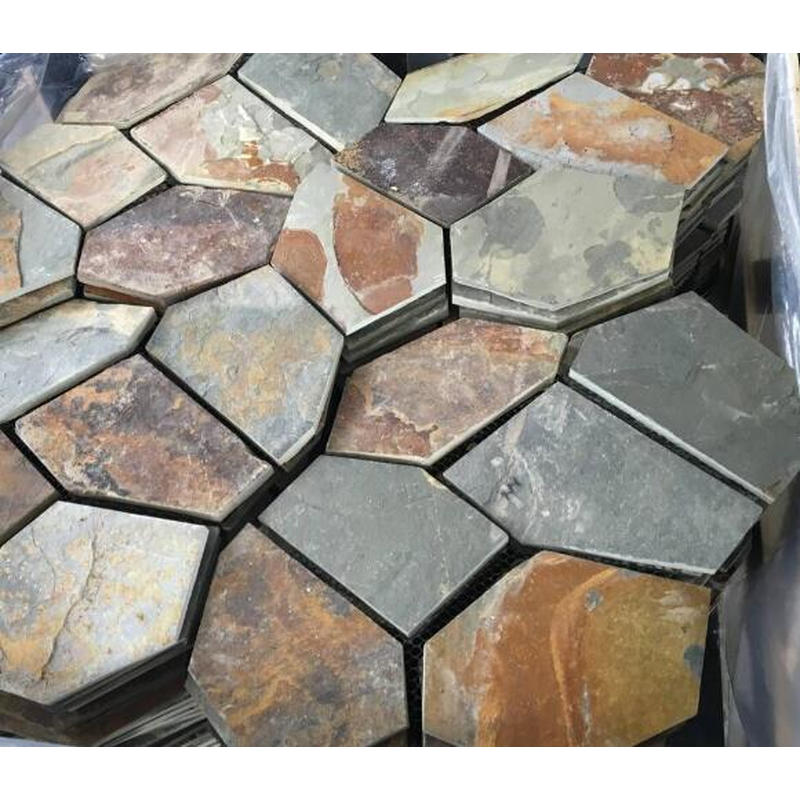
A flagstone path safely guides you into a house, while a patio or path entices you outdoors, into a front or back yard. Flagstone adds permanence, strength, and durability to a landscape along with creating a natural hardscape element to an area that otherwise might just include plants, or softscape.
Part of the appeal of flagstone is its versatility: it can be cut into uniform rectangular shapes or more random, irregular pieces that can be arranged like a puzzle. Unlike other stones, a roughened surface texture offers good, safe traction—especially when wet—making them an ideal choice for outdoor flooring.
Landscape architects, builders, and masons describe stone by geological type, trade names, size, or shapes. Flagstones are large, flat slabs of stone milled in thicknesses of 1 to 3 inches. It is a sedimentary rock, often made of sandstone. It is commonly available in the colors red, blue, and brownish-yellow. A product of nature, no two stones are exactly alike.
Other popular types of stone for landscaping include natural boulders, cut stone, cobblestones, veneer stone, and crushed or rounded gravel.

Consider using flagstones that are at least 1-1/2 inches thick as stepping stones or patio flooring. With the latter, flagstones can be laid directly in soil or a bed of sand. Thinner slabs should be laid in wet mortar or concrete to prevent cracking when stepped on. The spaces between irregularly shaped flagstone can be filled with pea gravel, polymeric sand, or ground cover plants like Dymondia margaretae, creeping thyme, and dwarf mondo grass.
When flagstone is positioned in a tight-fitted design or pattern, mortar is used to fill in the seams and gaps. Butting pieces close together and using mortar creates a smoother, more even surface, which is ideal for patios.
Although not traditionally thought of as a wall material, flagstone can be stacked to create a natural-looking low wall. Available in a wide range of colors—from white sandstone to black slate—flagstone can blend with other surfaces and hardscape elements in a landscape. Flagstone walls can be built dry-stacked or mortared. Advantages of mortar, which is like glue that holds stones together, include:
Visit a local stone yard to find out what's available and what you find most appealing for your particular project. The good thing about choosing stone from a local source is that it is more likely to blend with the environment and will be available if you run out. Should you decide to build additional outdoor hardscape features, those stones or similar pieces will be available at your local dealer.
Since flagstone is often used for flooring, consider the types of activities that will take place on the surface before investing. For front pathways, think about who might be walking across those flagstones. Any relatives on walkers or in wheelchairs? A smooth and even pathway will make the walk from the street or curb to your front entry much easier. Some cities have building code requirements for ease of access and entry.
Backyards can be more casual and creative, with flagstones separated by low-growing ground cover or pea gravel rather than cement or mortar. If the flagstone is for a patio, any furniture that sits on top of the stone should be flat, even and steady.